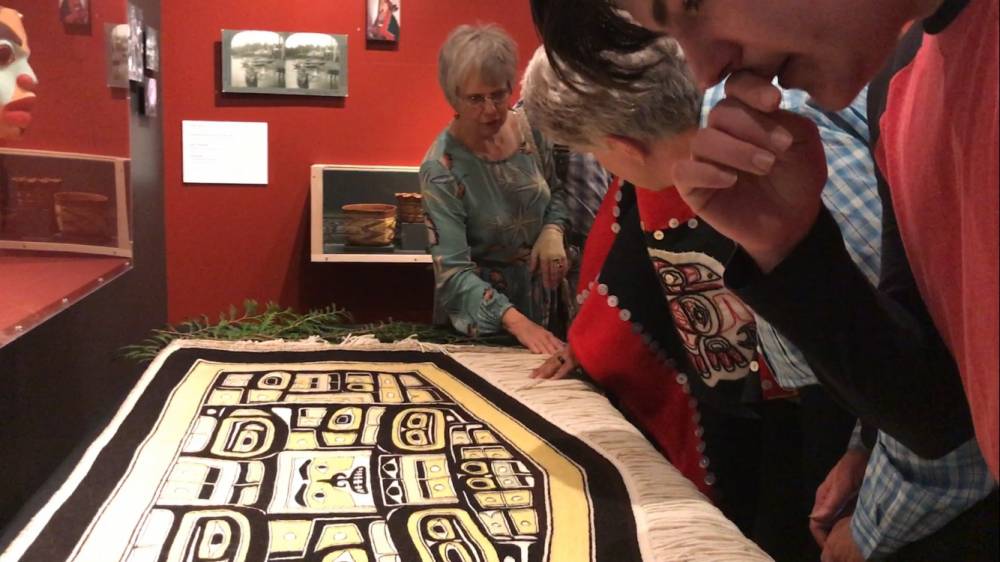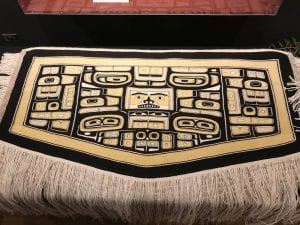
On Saturday, the Totem Heritage Center in Ketchikan celebrated its acquisition of a Chilkat robe. After 16 years, Dorica Rockwell Jackson finished weaving her Diving Whale robe, which will be permanently on display.
Museum Director Anita Maxwell said she’s excited to see the robe stay at the museum.
“It’s been so fun seeing it come to life, her dedication to have it just right,” she said. “It could have gone anywhere. It’s a beautiful piece, it’s a highly valuable and cherished piece, and the fact that we were able to fundraise so it could stay at home is wonderful. So we’re really honored to have it here at the Heritage Center.”
An ethnographic museum in Antwerp originally commissioned Jackson to create the robe. Jackson allowed them to choose between three traditional designs, and began crafting the robe in 2002.
When Jackson began working full-time in 2007, she didn’t have as much time to work on the robe. She said when Holly Churchill began apprenticing with her, she restarted work on the robe in a room at the Totem Heritage Center. By the time she was finished, the Antwerp museum was no longer in a position to acquire the piece. So when it was finished, it was available for the City of Ketchikan Museum Department.
Jackson said she made her own loom with a free hanging warp for the robe. She said using a crossbar supported by two upright posts helps relieve tension when twining.
As a textile design major at the University of Washington, she started weaving after taking classes on Northwest Coast Indian Art.
“And then the professor said Chilkat weaving was a dying art form, only two people really were left who knew how to weave it,” said Jackson. “So I thought, ‘well gee, I love weaving and I like Northwest Coast Indian Art, I’m gonna learn Chilkat weaving.’”
During the presentation, her husband, carver Nathan Jackson, wore the robe for a ceremonial dance. She said it symbolized the ownership of the robe transferring from the Raven Clan and the Chilkats to the museum. Jackson was also glad the community had a rare chance to see the robe in use before hanging on display.
“You know, you look at these robes and all these things—masks, regalia, and everything in museums—but they’re meant to be used,” said Jackson. “They used to be used. And so this one at least got to be used once before it goes in a case never to be used again.”

Jackson said she’s glad the community of Ketchikan and its visitors can continue to enjoy the robe at the Totem Heritage Center.
“Because of the way the case is constructed, when I teach class, I can use it as a teaching example and I’ll have access to the back of it because all of the secrets of weaving are always on the back,” said Jackson. “It’s kind of part of me in a way because it took so long to do it, so I’m glad it gets to stay here.”
Next, Jackson plans to challenge herself by making something with sleeves.





